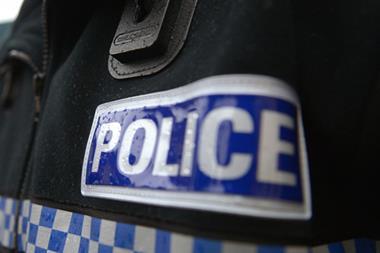The government is to ban the open display of tobacco in shops in England and Wales. Health secretary Alan Johnson said this morning that the big supermarkets would have to implement the ban first. There will also be steps put in place to prevent underage access to vending machines.
Today’s announcement comes at the end of a six month government consultation on the future of tobacco control. It stated that more than 96,000 responses were received - the largest ever response to a consultation of this kind.
According to the Department of Health, the responses “overwhelmingly supported removing tobacco displays in shops, and tough action to restrict access to vending machines”. It added that, since the ban on tobacco advertising, retail displays in shops were the main way in which tobacco products were marketed to children. It said the new measures would be taken forward in primary legislation through the Health Bill in the next parliamentary session.
Johnson said: “Enticing multi-coloured displays encourage young people to start smoking – we must put a stop to this. Smoking is a habit which is hard to break and causes 87,000 deaths a year in England alone.
“Protecting children from smoking is our goal. My hope is that shops will use this opportunity to promote healthier goods to their customers.”
Point of sale displays have already been removed in a number of countries including Canada. The government said that comprehensive results compiled by the Canadian Tobacco Use Monitoring Survey showed that removing point of sale display had coincided with a fall in smoking prevalence rates among 15 to 19 year olds - from 29% in 2002 to 19% in 2007.
It added: “There is no evidence that stores have had to close as a result of removing displays in either Iceland or in Canada. Evidence from Canada suggests the costs of refitting stores could be as low as £550 per store. The Government will work with trade bodies, provide support and ample lead-in time for compliance to minimise any burden on business – regulations will come into force from October 2011 for larger shops, and for smaller businesses not until 2013.”
Other plans have been scrapped as a result of the consultation – such as getting rid of 10-pack cigarettes.
There are also plans to clamp down on underage sales from cigarette sales vending machines, and people wanting to buy these products will have to show proof of age to get a token to work the machine.
The Association of Convenience Stores (ACS) reacted angrily to the announcement, saying it would lead to expense and disruption to tens of thousands of retail businesses of all sizes.
ACS has strongly opposed the Government’s proposals to introduce a tobacco display ban which it has estimated will cost around £5,000 per store and up to £252 million for the local shop sector.
ACS chief executive James Lowman said: “We have explained that implementing a tobacco display ban will cost our industry over £250million and concessions on a longer lead-in period will not allay our grave concerns. This announcement makes a mockery of government claims to be the friend of small and local businesses.
“ACS will work with Government to explain the impacts of this change on retailers and will seek to reduce the costs that will weigh upon retailers.”
The ACS has expressed strong concerns over the evidence base used by government to support the ban. It said experiences from the few countries and states which have introduced a ban provided no compelling evidence that a display ban leads to a reduction in smoking.
Lowman added: “It is deeply frustrating that whilst the government is willing to treat dismissively robust evidence provided by experts here and abroad about the cost impact on retailers, they are willing to rely on inconclusive and flimsy evidence of the benefits of this measure.”
Lowman also criticised the government’s overall approach to the strategy consultation: "Far from delivering the overarching bold strategy for the future of tobacco control which was promised by this consultation; government has come up with a distraction that will divert attention and energy from measures that really could make a difference.
“What is needed is properly resourced interventions based on education of young people; effective deterrents against those adults that knowingly introduce smoking to young people and properly resourced policing of the multi-billion pound black market that is subject to almost no regulation at all."
Key elements of the consultation include:
Controls on tobacco displays in shops - 95,488 responses (84% in favour):
* The new powers will remove cigarette displays in shops which promote smoking to young people, prompt impulse purchases of cigarettes and undermine smokers’ efforts to quit.
* Since tobacco advertising was banned in 2002, retail displays have been the main source of marketing to young people by tobacco firms.
* Displays encourage unplanned purchases of tobacco, increasing sales by an estimated 12-28 per cent.
* Where other countries have removed displays smoking prevalence among young people has fallen by up to 10 per cent.
* Iceland and Canada have not seen shops close as a result of removing tobacco displays.
* Government will work closely with retailers to develop regulations setting out detailed requirements. We will aim to ensure this does not place unnecessary costs or burdens on the retail industry, and that there is ample lead-in time before any legislation is commenced to support businesses to prepare, allowing extra time for smaller businesses.
Preventing easy access from vending machines - 82,722 responses (90 per cent in favour)
* Powers will be sought to require age restrictions to limit easy access to young people and to remove machines altogether if they continue to provide cigarettes to people underage.
* Vending machines, which may appear harmless, are actually the primary source of cigarettes for nearly 1 in 5 young people aged 11 to 15, compared to 1 in 17 adults.
* Recent test purchase surveys have shown that children were able to buy cigarettes from machines in over 40 per cent of cases, and up to 100 per cent in some areas.
Other elements of the consultation were:
Plain packaging. Whilst support was clear for the idea of plain tobacco packaging to prevent promotion of tobacco products, the evidence base needs to be developed. The Government has committed to keep this under review and build on the evidence before taking further action.
Restrictions on the advertising and promotion of tobacco accessories, such as cigarette papers. Whilst there was strong support for such restrictions we need more evidence that this measure will effect behavioural change before taking action.
Pack sizes - 20s not 10s. Two thirds of respondents to the consultation were against the proposal. The most common reason cited against was that it could encourage smokers, particularly those who are giving up, to smoke more.
Harm reduction - helping those who ‘can’t quit’. Around 80 per cent of respondents are in favour of a harm reduction approach based on medicinal nicotine replacement therapy (NRT). We will consider this matter further, establishing what more can be done for our new tobacco control strategy.






























No comments yet